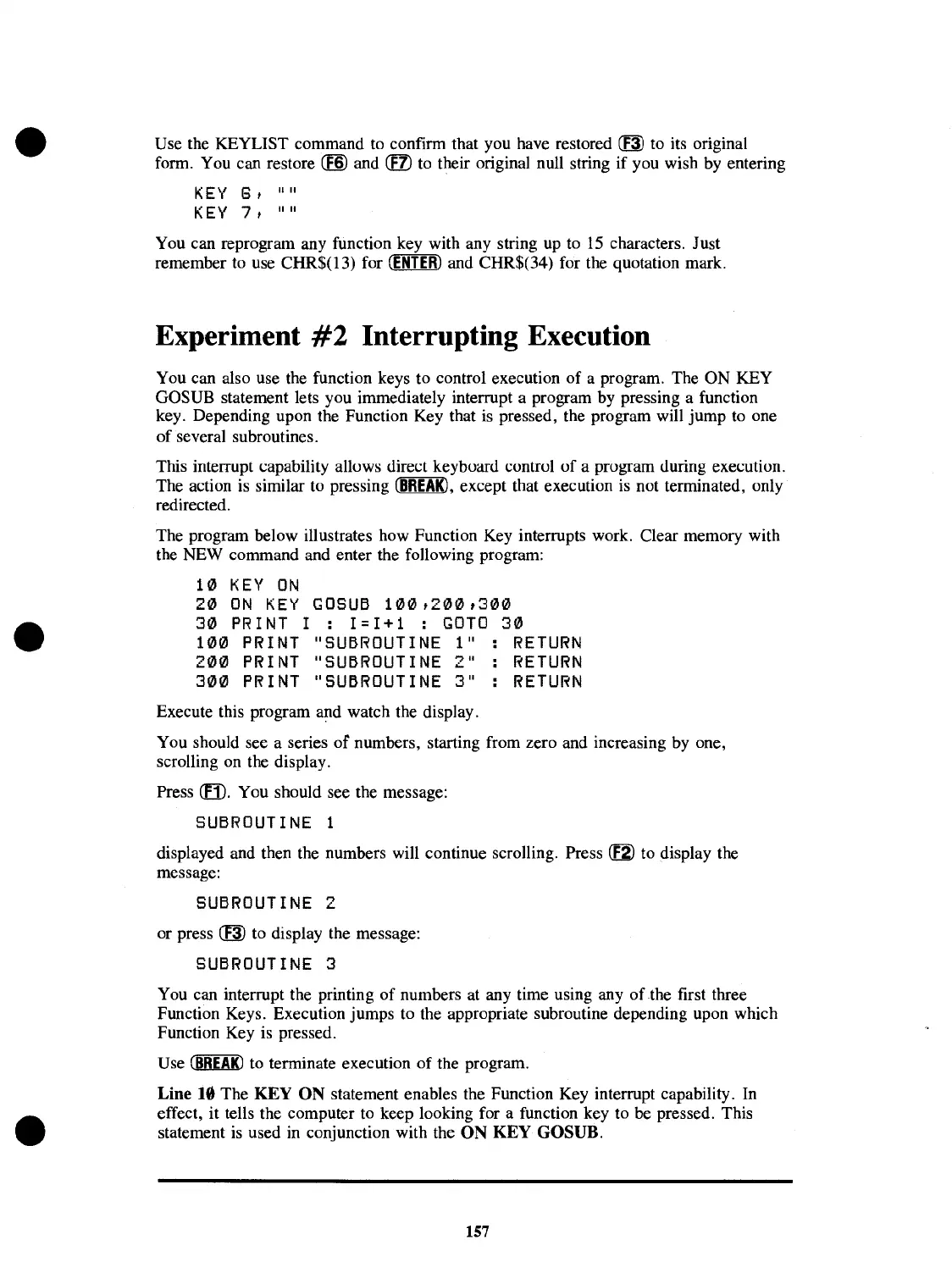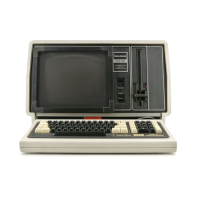Use the KEYLIST command to confirm that you have restored
~
to its original
form. You can restore (fg) and @ to their original null string if you wish by entering
KEY
8,
1111
KEY
7,
1111
You can reprogram any function key with any string up to
15
characters. Just
remember to use CHR$(l3) for
(ENTER)
and CHR$(34) for the quotation mark.
Experiment
#2
Interrupting Execution
You can also use the function keys to control execution
of
a program. The ON KEY
GOSUB statement lets you immediately interrupt a program by pressing a function
key. Depending upon the Function Key that is pressed, the program will jump to one
of
several subroutines.
This interrupt capability alluws direct keybuard cuntrol
uf
a program during executiun.
The action is similar to pressing
(BREAK),
except that execution is not terminated, only
redirected.
The program below illustrates how Function Key interrupts work. Clear memory with
the NEW command and enter the following program:
10
KEY
ON
20
ON
KEY
GOSU6
100,200,300
30
PRINT
I : 1=1+1 :
GOTO
30
100 PRINT "SU6ROUTINE 1"
RETURN
200
PRINT
"SU6ROUTINE 2"
RETURN
300
PRINT "SU6ROUTINE
3"
RETURN
Execute this program and watch the display.
You should see a series
of
numbers, starting from zero and increasing by one,
scrolling on the display.
Press
CfI).
You should see the message:
SU6ROUTINE
1
displayed and then the numbers will continue scrolling. Press
(E2)
to display the
message:
SU6ROUTINE
2
or press
CEID
to display the message:
SU6ROUTINE
3
You can interrupt the printing
of
numbers at any time using any
of
the
first three
Function Keys. Execution jumps to the appropriate subroutine depending upon which
Function Key is pressed.
Use
(BREAK)
to terminate execution
of
the program.
Line
18
The
KEY
ON
statement enables the Function Key interrupt capability. In
effect, it tells the computer to keep looking for a function key to be pressed. This
statement is used in conjunction with the
ON
KEY
GOSUB.
157

